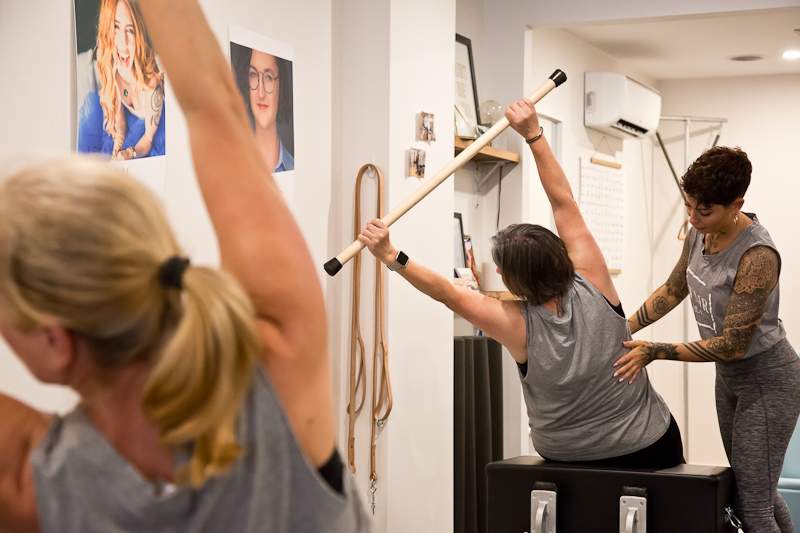QUIRKY BODIES AND THE CLASSICAL METHOD
The original Pilates exercises are mainly executed with the body acting as one piece, centrally. Occasionally we break out to one side at a time but mostly …. we are one clump of human that bends, twists and mermaids. We rarely meet a client who is symmetrical in their bones, joints and movements; it’s more common that through our genetics, lifestyle and activities we have become a bit ‘quirky’. Many of us slouch into one hip or have a scoliosis (lateral curve and/or twist of the spine), side bend in our rib cage a bit or have less ability to turn our head one way when compared to the other – the list goes on.
Luckily, we exercise professionals have learnt how to operate the Pilates method to your advantage so that we can support our clients; every-day people with their own body quirks, postural changes and … asymmetries.
We enjoy working with you to understand how to balance out your natural architecture with daily tasks and interests. Sometimes we incorporate this into your warm up, occasionally you’ll do a few extra repetitions to one side or more often, we will use both of these approaches and then bring you back to centre with the traditional work.
With long-term asymmetry and bearing in mind that the body usually operates in pairs (medial supports lateral, anterior works with posterior etc.). Take my body for example, due to some mechanical issues in my right ankle and knee my body shunts my pelvis and lower back off to the left to stand comfortably. After many years, this results in long-term changes in these structures which are exacerbated when I sleep on my left side or twist and crunch to the left. I take the time to work into rotation a few different ways in my personal sessions and when standing up I make the effort to sway my hips to the right and accept weight into my right ankle and big toe.
As a result of this shift I end up with incredibly tight Left hip, thigh and calf muscles plus tenderness in the back of my left hip and abdomen. In the studio I choose to do some awakening exercises before the hundred or Reformer footwork so that I can find my centre and work centrally. Without these exercises that wake up my brain and body connection I generally over-arch my lower back and leave a session feeling disconnected and physically brittle. It’s a gentle balancing act as to how I work to support my asymmetries which are changing naturally as I age *ahem. There are days where I don’t do any of the traditional work but focus on one side for leg springs, doing the arm spring series in a lunge to wake up one side of my body more … or needing some mobility and release work into that pesky left side.
Once you are aware of your asymmetries and how to work with them instead of against them, it’s like receiving the instruction manual to flat-pack furniture.
Ideally, our clients would have 90 minutes several times a week to come to the studios and warm up to find their centre and then execute a traditional series, but time is a luxury that few of us have. Maybe it’s our shared goal for our retirement?
Whichever way you look at it, one of the reasons why our clients leave a session floating on air is because we don’t take the ‘no pain no gain’ approach. Instead, we look, we listen and we work with receptive clients on finding their way forward.
Check out Chris on tmrnow+ https://tmrnow.vhx.tv for his asymmetry themed mat for experienced clients or take one of Nicholas’ beginner series sessions where you’ll learn your anterior from posterior.

